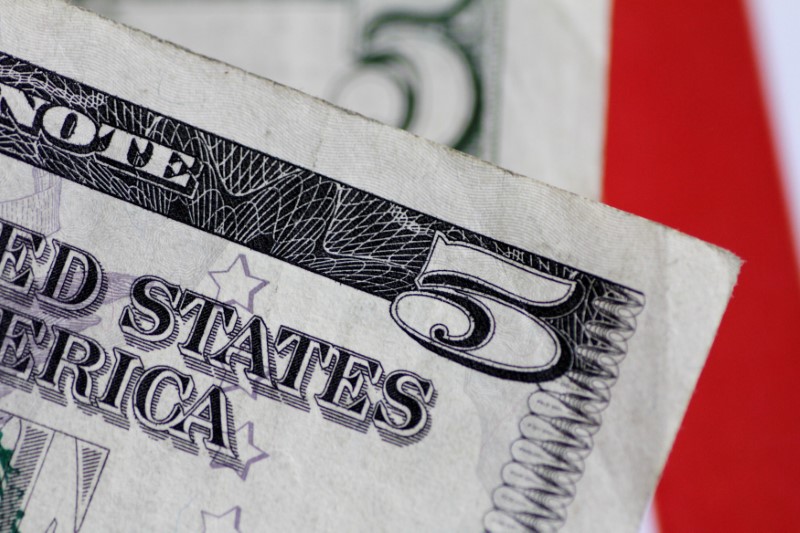Investing.com – The US dollar fell on Wednesday ahead of the conclusion of the Federal Reserve’s latest rate-setting meeting, while the Japanese yen rose after the Bank of Japan tightened monetary policy.
At 05:20 ET (09:20 GMT), the Dollar Index, which tracks the greenback against a basket of six other currencies, was trading 0.3% lower at 103.992 and within a tight range.
Dollar Ahead of Fed Decision
The ECB concludes its two-day policy-setting meeting later Wednesday and interest rates are widely expected to remain unchanged the following day.
The US central bank is widely expected to leave interest rates unchanged this week, but the dollar is showing signs of weakness as traders expect Fed Chairman Jerome Powell to pave the way for a rate cut at the US central bank’s next meeting.
“Powell will certainly maintain a cautious tone on inflation this time around, but he has often been the voice of a dovish faction of the FOMC and the press conference could generate some negative headlines,” ING analysts said. .
According to CME Fedwatch, the general consensus is for a 25 basis point cut in September.
The pound sterling is falling due to uncertainty about the BOE
In Europe, it traded 0.1% lower at 1.2826 ahead of Thursday’s meeting, which is seen as a close call as the bank stands still or cuts rates.
UBS expects the BOE to make the first cut of 25 basis points tomorrow, saying in a July 24 note that “the main reason we expect the MPC to cut rates is the recent data.”
“First, headline inflation in June at 2% was exactly in line with the Bank’s May projections, despite upside surprises in April and May. Second, the overshoot in services inflation (5.7% in June versus the BoE estimate of 5.1%) was largely driven by volatile and regulated components, which should have no impact on the medium-term inflation outlook – a assessment shared by several MPC members. , according to the June minutes.”
“Third, the July labor market report showed more pronounced signs of a slowdown in wage growth, with regular private sector wage increases falling by 0.3 percentage points to 5.6% year-on-year in May, largely in line with the forecast from the BoE for May.”
rose 0.1% to 1.0823, in the wake of data showing the eurozone economy grew 0.3% in the three months to June, slightly more than expected.
Moreover, the eurozone rose by 2.6% year-on-year in July, slightly above the expected 2.5%, while the ‘core’ figure, which excludes volatile energy and food elements, was also higher this year at 2.9 %.
“It will certainly take more than a marginal inflation surprise for markets to price in fewer than two ECB cuts by year-end, but today’s data may help the EUR/USD maintain the 1.0800 support for the Fed risk event to strengthen tonight,” ING said. added.
The yen rises after the BOJ rise
In Asia, yields fell 1.4% to 150.66, with the yen surging after short-term rates were raised by 15 basis points to around 0.25% – the upper end of market expectations.
It also said it will halve the pace of Japanese government bond purchases – from 6 trillion yen in the first quarter of 2026 to ¥3 trillion ($19.5 billion).
The yen rallied sharply in July, with the USD/JPY pair down around 6.5%, as a mix of tapering carry trade and suspected government intervention led to buying in the currency.
fell 0.4% to 7.2256 as soft data and positive government comments raised expectations for more stimulus measures in the country.
fell 0.7% to 0.6492, falling to the weakest level in three months, mainly thanks to some soft data for the June quarter.
While headline CPI grew as expected in the quarter, lower core inflation fueled hopes that inflation will ease in coming months, reducing the need for a rate hike by the RBA.


